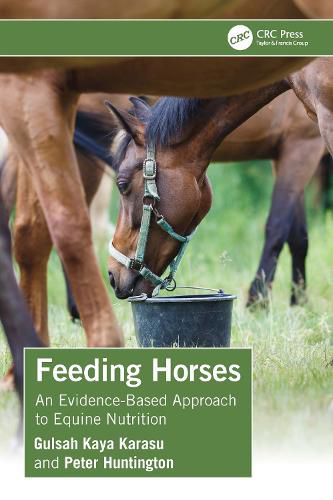Readings Newsletter
Become a Readings Member to make your shopping experience even easier.
Sign in or sign up for free!
You’re not far away from qualifying for FREE standard shipping within Australia
You’ve qualified for FREE standard shipping within Australia
The cart is loading…






This concise handbook provides evidence-based, practical horse nutrition accessible
to all readers. Standing out from very dense, theoretical and practical horse
nutrition books, it arms equine students, veterinary students and horse owners
with practically applicable information, bringing theory and practice together.
At the end of each chapter, veterinarian and equine nutrition experts Dr Gulsah
Kaya Karasu and Dr Peter Huntington provide guidance on practical applications,
calculations and the real-life use of information. For example, how is gastric ulcer
formation triggered by traditional horse feeding? How can the risk of gastric ulcer
formation be reduced with evidence-based feeding?
Divided into four parts, the book covers the horse's digestive system, types of
feeds, formulating rations, and nutrition-related health disorders. Its scientifically
validated, practical information will be invaluable for horse owners, students and
trainers, equine nutritionists and practitioners within the equine industry.
$9.00 standard shipping within Australia
FREE standard shipping within Australia for orders over $100.00
Express & International shipping calculated at checkout
This concise handbook provides evidence-based, practical horse nutrition accessible
to all readers. Standing out from very dense, theoretical and practical horse
nutrition books, it arms equine students, veterinary students and horse owners
with practically applicable information, bringing theory and practice together.
At the end of each chapter, veterinarian and equine nutrition experts Dr Gulsah
Kaya Karasu and Dr Peter Huntington provide guidance on practical applications,
calculations and the real-life use of information. For example, how is gastric ulcer
formation triggered by traditional horse feeding? How can the risk of gastric ulcer
formation be reduced with evidence-based feeding?
Divided into four parts, the book covers the horse's digestive system, types of
feeds, formulating rations, and nutrition-related health disorders. Its scientifically
validated, practical information will be invaluable for horse owners, students and
trainers, equine nutritionists and practitioners within the equine industry.